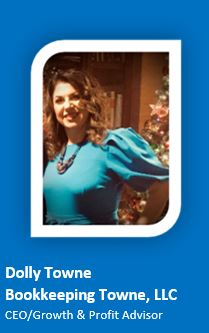How did it creep up so quickly? The year end is approaching, and it will be 2021 before we know it! Are you ready for it? Have you prepared & recorded everything you need to close out the year? If you haven’t, NO WORRIES! In this month’s blog, I thought it would be great to tell you what to do to be ready for your CPA (or of course, I can help you get prepared!)
Here are the TOP 5 To-Do’s every business owner can do to get yourself ready for 2021:
1. Bank Reconciliations
One of the first checks for year end bookkeeping is to get your business bank reconciliations completely up-to-date. By “up-to-date”, I mean that your full 12 months has been reconciled and the closing balances in your accounts match, or reconcile to, the bank statements ending balances.
Now, this will only work if you have a bank account for your business that is separate from your personal bank account – if for some reason you don’t, then the approach is different and I discuss this in point 3 below.
It’s not only your business checking account that needs to be reconciled…..here are a few other accounts that may need to be reconciled, as well:
- Savings Account
- Petty Cash Box
- PayPal, Square, Stripe (or similar)
- Credit Card
- Credit Line
- Loan Account
2. Paying Business Expenses with Personal Accounts
If you have a business bank account in which all of your business transactions were entered, but you know you have paid for some business expenses out of your personal bank account and you haven’t entered them into your bookkeeping system yet, give them to your Accountant to sort out, or enter them now yourself…
…like this:
- Make a list of what they are and figure out the appropriate ledger account for each – if you have several expenses that can be grouped into one ledger account, then calculate their total.
- Next, prepare a journal to enter them into your books.
- The journal will be:
DEBIT Expense (split them out to whatever account code is appropriate for each expense)
CREDIT Capital (Owner’s Equity) - Date the journal using the last day of the last month of your financial year.
3. Reconcile Personal Bank Account
I will explain what to do if you don’t have a business bank account so your personal account would be a mixture of both, personal and business expenses.
I recommend going through each monthly personal bank statement, highlight the business transactions (just like in Step 3. above but also including money from sales) and enter these into your bookkeeping system or spreadsheet as income or expenses.
If you are using bookkeeping software you can enter the transactions in through journals (see example in Point 3 above for the example journal).
You will need to also include income from sales that you deposited into your personal bank account. Below is a journal entry showing how to enter these income transactions.
DR Owner’s Capital (Personal Deposits)
CR Income
If you are using spreadsheets your goal is to enter in all the Income into Income accounts and all the Expenses into expenses accounts.
You don’t have to indicate individual dates for each transaction.
4. Quick-Check your Ledger Accounts
Check that each income and expense type has been entered to the correct ledger account throughout the year and for the regular bills check they have been entered to the same ledger account consistently……
One of the ways you can do this is that you can generate a detailed general ledger report for the full tax year ( I would wait until at least January to do this just so you can view all 12 months of activity) in your bookkeeping software. I would skim through account and check to see if anything “jumps” at you as being wrong. Usually, when you find errors in transactions that have been categorized is by creating a journal entry – these move the amounts from one ledger account to another ledger account without affecting your bank account.
5. Reconcile your Payroll Tax and Sales Tax
It’s a good idea to check that the total amounts for these tax totals in your bookkeeping system for the year, match the total of what you have reported to the tax authorities for the year.
If there are any variations, it means that you may have accidentally made some changes in your bookkeeping software since you filed your reports.
You must find out what has gone wrong and make the necessary adjustments to fix this.
Either, the changes are a mistake and the entries should have gone to a different ledger account, or your adjustments were not reported to the tax authorities which you must now look at doing with your end of year bookkeeping process – but do this with care because you may be charged penalties.
Yes, Year-End is Upon Us, but you don’t have to be afraid of it. My name is Dolly Towne and I am your bookkeeper that is always happy to help. These are the Top 5 Things that I think that would be efficient for every business owner to look at while they are wrapping up the year! There are definitely more action items that you can do like Depreciation, Outstanding Bills, etc. If you have any questions on any other topics that you want me to personally explain to you, here’s my contact information.

Mobile: (401) 474-5229
Email: dolly@bookkeepingtowne.com
Website: bookkeepingtowne.com
Address: 1275 Wampanoag Trail, Suite 3B Riverside, RI 02915
Skip the emails, LET’S TALK! Click here
